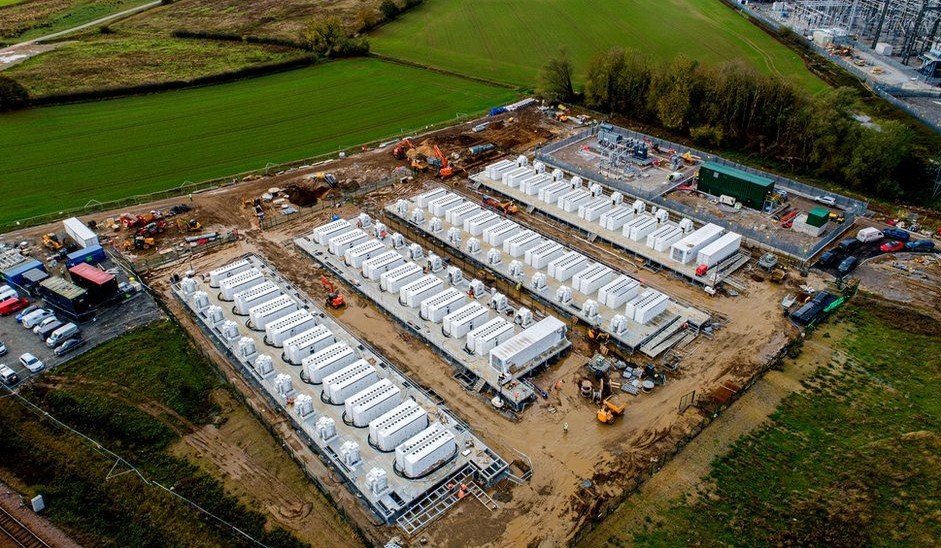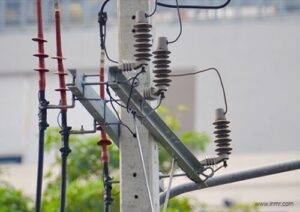Battery storage systems have emerged as a pivotal technology in the energy revolution, enabling the storage of locally produced electricity on-site. These systems, often housed in containerized units, store power generated by renewable sources such as photovoltaic systems and wind turbines, and feed it back into the grid on demand. However, their electronic components can be severely damaged by overvoltages caused by lightning discharges and network-related voltage peaks. This necessitates a comprehensive lightning and surge protection system to ensure their constant availability and prevent serious economic consequences.
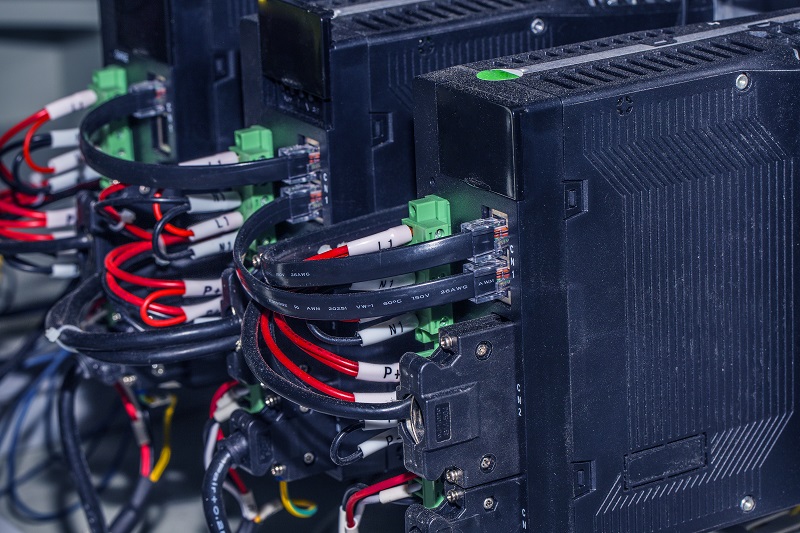
The Threat of Lightning and Surge Damage
Lightning discharges pose a significant threat to battery storage systems. The overvoltage resulting from a lightning strike far exceeds the dielectric strength of the electronic components in the storage system. This can lead to defective electronic components, including information and communication technology, defective inverters, or battery units. In the case of a direct strike, the metal roof of the storage system may also be perforated, resulting in water damage when it rains.

Network-related voltage peaks, such as those from switching operations or earth and short circuits, also pose a potential threat. These transient overvoltages can damage the electronic equipment, leading to expensive maintenance and repair work. Therefore, understanding the nature of these threats and implementing robust protection measures is crucial for the longevity and reliability of these systems.
Standards for Lightning and Surge Protection

Standards such as IEC 60364 provide guidelines for the protection of electrical systems in the case of transient overvoltages resulting from atmospheric influences transmitted via the supply network, including direct lightning strikes in the supply lines and transient overvoltages caused by switching operations.
These standards provide conclusions as to whether surge protective measures are required, assess the risk of the location, define surge protection categories and the correspondingly required rated impulse withstand voltage levels of the equipment, and define whether additional surge protective devices are necessary. They also consider the required availability of the system. Adherence to these standards is crucial in ensuring the safety and reliability of battery storage systems.
Causes of Transient Overvoltages
Transient overvoltages can be caused by direct strikes in the battery energy storage system or in the supply line, characterized by lightning current with the impulse waveform 10/350 μs. Distant lightning strikes or so-called indirect lightning strikes lead to conducted partial lightning currents (impulse waveform 10/350 μs) in the supply lines, or also to induced / capacitive couplings (impulse 8/20 μs) in the electronic components of the storage system itself. Additionally, overvoltages can be caused by switching operations, earth and short circuits, or the tripping of fuses.
Understanding these causes is crucial in designing effective protection measures. For instance, the design of the surge protection system must take into account the potential for both direct and indirect lightning strikes, as well as the possibility of overvoltages caused by switching operations and other network-related events.
Lightning Protection for PV Storage Systems
When photovoltaic power stations are equipped with a battery storage system, the electronic equipment, battery, and inverter need to be protected against surges. For example, a PV storage system (container construction) can discharge a direct lightning strike to the soil via the metal housing of the container. To prevent a direct strike from melting holes in the metal roof, the four corners are fitted with air-termination tips as defined strike points. The equipment inside the container is protected in a similar way to a Faraday cage, i.e., the separation distances to the electrical components inside must be kept. Suitable lightning current and surge arresters should be installed as closely as possible to where the main supply lines enter the container in order to discharge any interference impulse coupling via these copper-based lines.
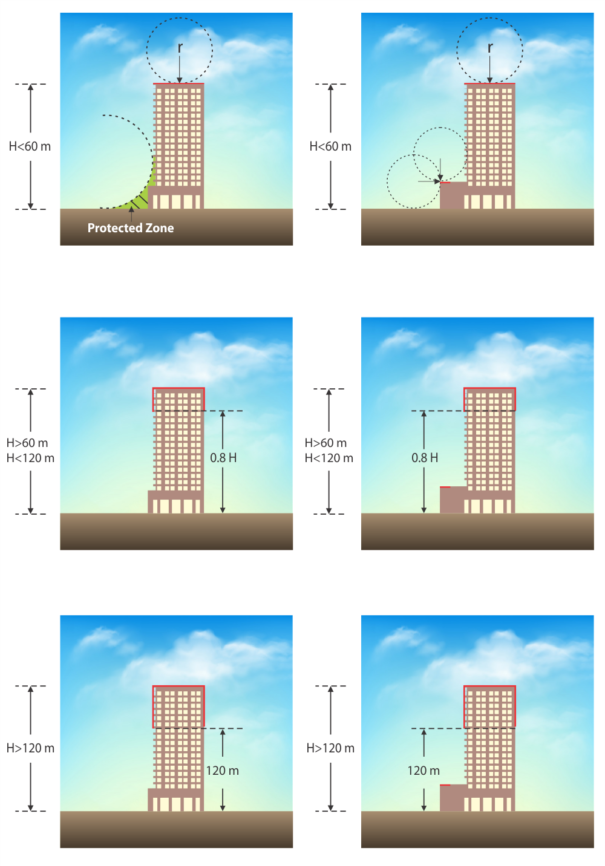
This approach to protection is based on the principle of creating a “zone of protection” around the equipment to be protected. The air-termination tips and the metal housing of the container act as a shield, directing the lightning current safely to the ground and away from the sensitive electronic components inside. However, this is not enough to provide complete protection. The surge arresters installed at the point where the main supply lines enter the container are crucial in dealing with any residual overvoltages that may still reach the equipment via the supply lines.
Battery Storage Systems for the Power Grid
If battery storage systems for the power grid have concrete construction, it is often impossible, or at least very difficult, to maintain separation distances from the external lightning protection system. This problem can be solved by installing high-voltage resistant insulated conductors, so-called HVI conductors. This prevents dangerous flashovers from the external lightning protection system to conductive parts such as supply lines. If the batteries and inverters are in separate containers, in the event of direct and nearby lightning strikes, galvanic lightning currents are coupled in the connecting cables. To prevent this, an earthing conductor must be laid above the cables to include them in the protected volume.
This approach to protection involves creating a “protected volume” around the cables connecting the separate containers. The earthing conductor laid above the cables acts as a shield, preventing the coupling of galvanic lightning currents into the cables. Any over-voltages that do manage to reach the cables are then dealt with by Type 2 surge arresters installed at both ends of the cables.
Selection of Lightning Protection and Surge Protective Devices
When selecting appropriate Lightning Protection and Surge Protective Devices, many factors play an important role. Factors like details about the location, information on the local system configuration, the system voltage, and the nominal current of the relevant interfaces.
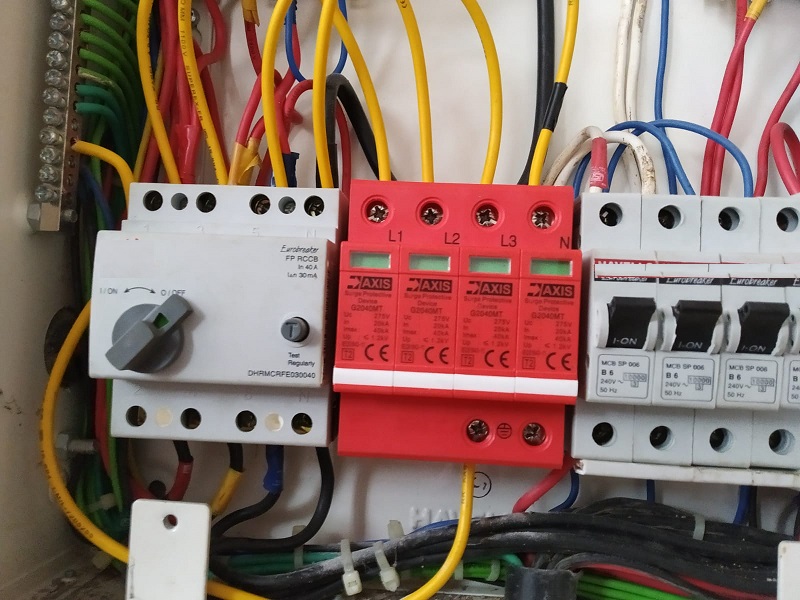
For instance, the connection lines between the battery and the DC outputs of the inverter must be protected by a type 1 SPD because they cross different lightning protection zones. The type 1 + 2 combined arrester is an excellent choice for use up to a direct current of 950 V. The type 1 + 2 combined arrester is suitable for direct currents up to 1500 V DC.
When fitted with air-termination devices, the DC connection lines of a PV module must be protected by a type 1 surge arrester specially designed for use in photovoltaic systems. If, in addition, the solar park is lit with LED lighting, this should also be protected against the effects of surges and wear and tear from switching operations. The equipotential bonding required in the standard is achieved with a K12 equipotential bonding bar. These busbars are specially tested for application as protective and functional equipotential bonding and lightning equipotential bonding.
Conclusion
Lightning and surge protection is a critical aspect of the design and operation of battery storage systems. By understanding the causes of transient over-voltages and implementing appropriate lightning and surge protective devices, we can ensure the reliable operation of these systems and their contribution to a sustainable energy future. The selection of suitable protective devices, adherence to standards, and careful system design can significantly mitigate the risks posed by lightning and surge damage. As the adoption of battery storage systems continues to grow, so too will the importance of effective lightning and surge protection.
I hope you now have a clear understanding of Earthing System. At Axis, we manufacture and supply a wide range of Earthing Materials, including Earth Rods, Earth Plates, Strips, Clamps, Earth Pits, and other accessories. We also help design complete systems for your structure, suitable for Substations Earthing, Solar Earthing, and residential or commercial structures.
Thank you for reading the blog, Axis is a leading manufacturer and supplier of Electrical Components to over 80+ Countries. To get a quote or to talk to our industry expert visit our contact us section. You can also watch our videos by our experts – click here.

